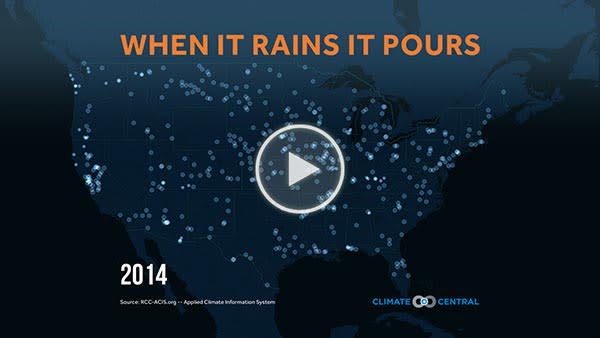Nationwide, heavy precipitation is increasing. Some locations are seeing that increase more than others, but the upward trend is consistent. This week marks the release of our special extensive heavy precipitation report: When It Rains It Pours.
An increase in heavy precipitation is a classic sign of climate change. As the climate warms, so does the amount of evaporation from the land and oceans, since warmer air holds more water. As condensation occurs within a storm, that higher water content is released as heavy precipitation.
This month has seen a dramatic amount of rain in the Southern Plains. While a wetter pattern is expected there during an El Niño, the amount of rain is staggering with more expected before the end of the month. In fact, 37 locations are having their wettest May on record and 8 of those are records for any month of the year.Oklahoma and Texas have received a phenomenal amount of rain in May. At the beginning of the month, parts of northern Texas and western Oklahoma were in an exceptional drought. Since then, southern Oklahoma has received between 15” and 25” of rain. Statewide, Oklahoma has had 300% of its normal rainfall this month, and it is the state’s wettest month on record. That rain has come in several intense rounds, with five days this month bringing more than an inch of rain to Oklahoma City, and 7” alone coming down on May 6.
In Texas, Houston was deluged with 6”-10” of rain across the city on the night of May 25. The resulting flash flooding paralyzed the city for the following morning’s commute. Between Austin and San Antonio, heavy rain sent the Blanco River to a level of 40.21 feet before the gauge failed. That level was 6.9 feet above its 1929 record crest. Before the weekend rain started, the river was averaging only 5 feet.
